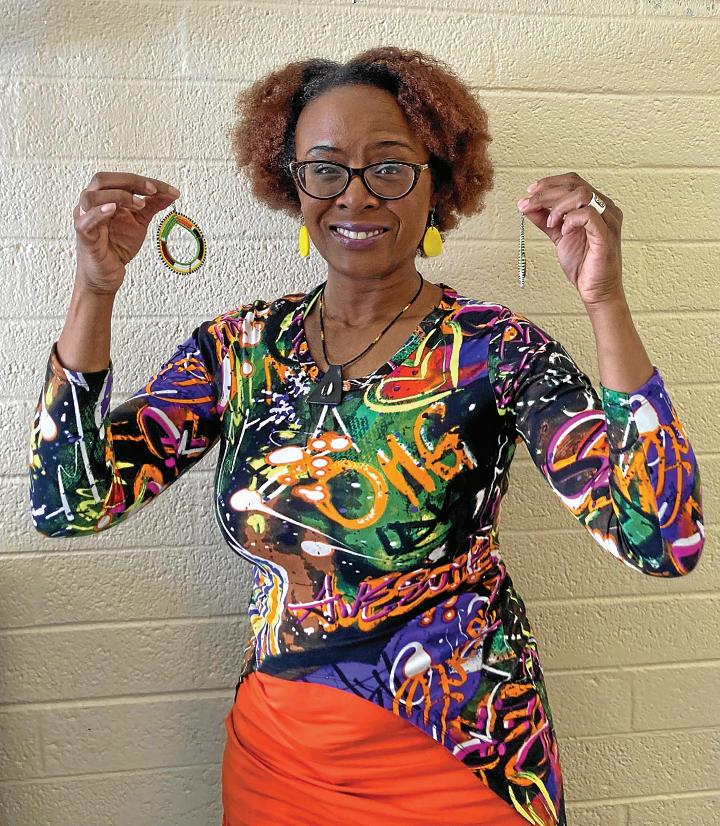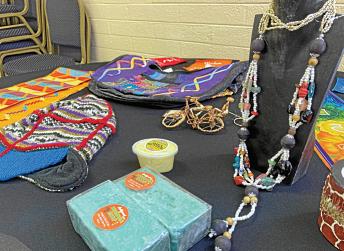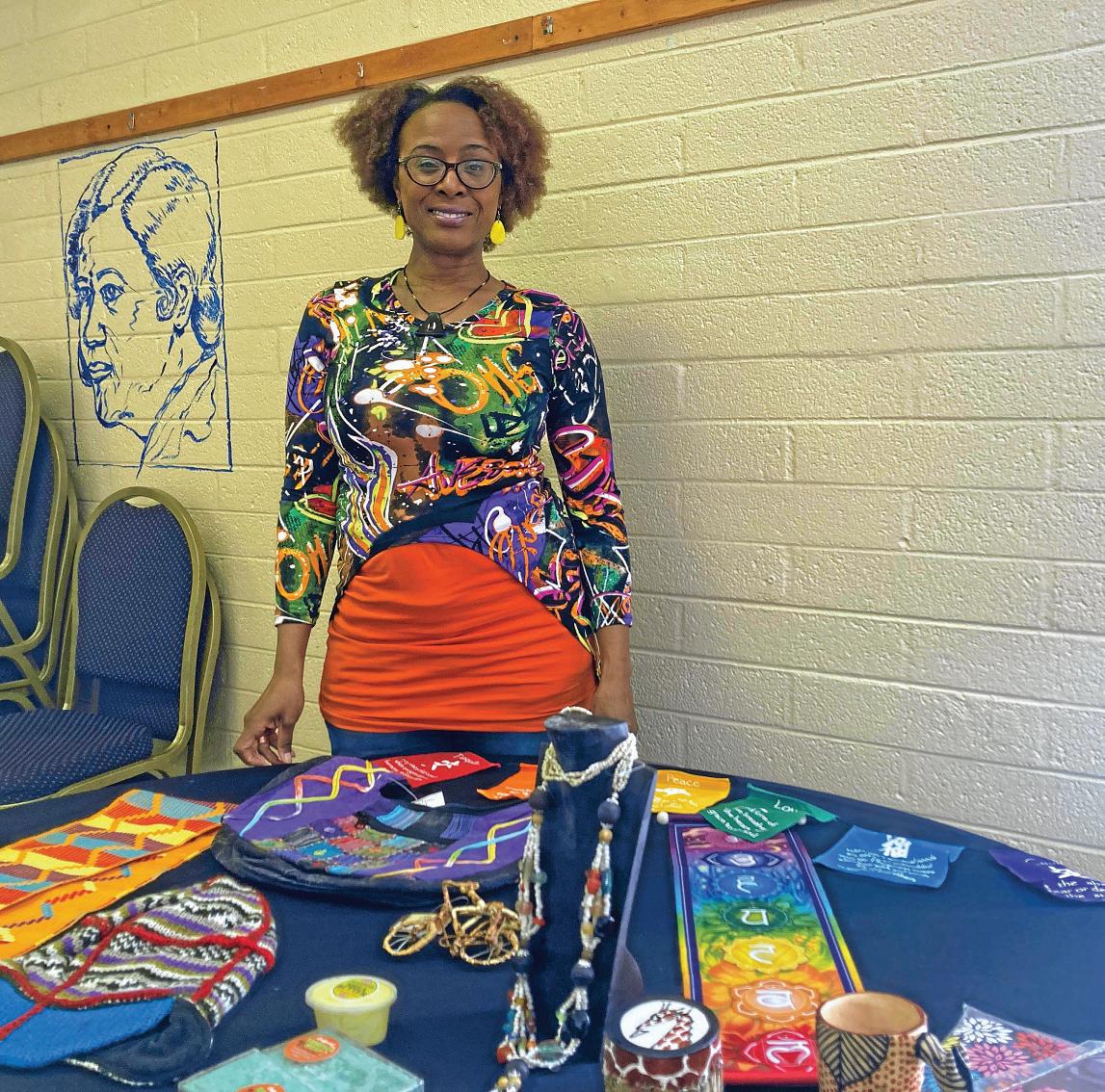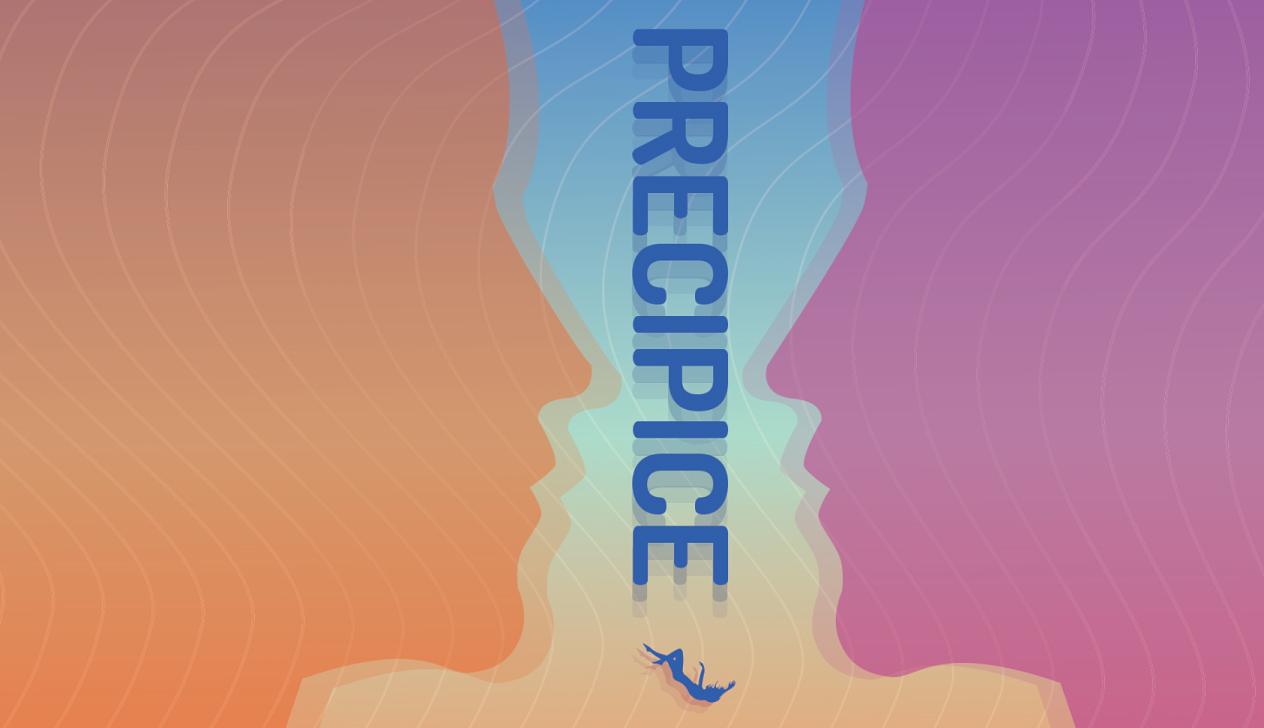
3 minute read
A TASTE OF THE WORLD
Flagstaff local Kim Robinson champions fair trade products from around the world
ADRIAN SKABELUND
Advertisement
Be it earrings from Mali or wooden bowls and stone chess sets from Kenya, Flagstaff local Kim Robinson has been bringing free trade arts and crafts from across the globe to Flagstaff for over a decade through her business Gallyvant Market.
In that time, it’s been quiet the ourney, taking her from the east coast and, after a stint in the air-force, to Flagstaff She’s even starting to make and sell her own crafts in addition to the ones she’s purchased from around the globe. Majoring in anthropology in collage, Robinson said she has always been passionate about learning about other cultures and finding ways to share that passion with others but as she started working on what would become Gallyvant, she discovered something that would define the business: fair trade ethics
Whi e in these days, fair trade is well known, often associated with products like coffee and choco ate
Please see TRADE Page 14 bringing cultural representation from historically disadvantaged places in a way that actually ensures the money is going to support the artists and crafts people whose work it is
“It’s meaningful for me simply for representation because there aren’t a lot of black owned businesses here in Flagstaff, so for representation, it means a lot to me It also means a lot for me to pull from these overly exploited countries,” Robinson said.
“I think Flagstaff is very supportive of locally owned business It’s because of because of the type of city we are.”
Especially early on, Robinson said she would be informing customers about what fair trade even was as much as she was selling products.
The organization Fairtrade International, which helps govern what is and isn’t considered fair trade, was only established in 1997, so when she began, the concept was fairly unknown to the majority of consumers.
But, there can be aspects of operating within fair trade that makes it more chal- directly with the artists; someone who actually sat down, made those bracelets in their homes, one by one by one for hours and hours”
Arts,crafts and products from far flung areas of the world including Nepal,Kenya and South Africa are sold fair trade by Kim Robinson,owner of Gallyvant Market.


“If we’re not used to seeing that price point, it is difficult to buy into,” Robinson said.
Obviously that can make it challenging for potential customers, especially as so many have seen their pocketbooks shrink and expenses rise.
Those conversations happen less these days, Robinson said.
As more people are exposed to fair trade, Robinson said she has seen more customers that put aside a certain amount of their budget just for fair trade items, be they gifts or simply consumable products like coffee.
On top of that, Robinson said it has helped that overall, the prices of fair trade products have come down in comparison to mass market products, and that matters a lot because people may be finding themselves buying fair trade items who don’t even necessarily care about the issue.
A lot of that simply has to do with improvements in international shipping and how the countries she sources from have themselves continued to develop.
“I would go to a trade show and speak to someone from Senegal, and if they didn’t haul it with them, if they did not bring everything with them from Senegal, I would have to wait for months for it to get there. And it’s expensive, which increased the price of the object,” Robinson said “I have memories of sitting down and writing out these pages of orders, like quantity, the name of the item and then mailing it in, and then, all you do is sit on your hands for three months and wait for it to come in.” lenging than selling traditional mass market items For example, explaining to potential customers why her prices might be higher than what they might see elsewhere and why that was important, Robinson said.
Robinson said those conversations were countering something she started labeling as the “mass market effect.”
“You can’t lowball an artist and be fair trade You can’t purchase from an artist and not also invest in that artist’s community and entrepreneurial development and call yourself fair trade,” Robinson said. “If we don’t understand why the cost is higher – like we’re actually dealing more
All that has improved over the years, but Robinson said that for her, the most fun way of getting the items she sells is still probably trade shows.
“The last trade show I went to, I was able to purchase directly from an artist who made jewelry from South Africa So I’m sitting there talking to this lady, and she was like, ‘Oh, I made all these earrings.’ So I definitely had to clear off her table,” Robinson said
Those who are interested in Gallyvant Market’s fair trade, handmade and sustainable products can visit its website at gallyvantmarket.com.







